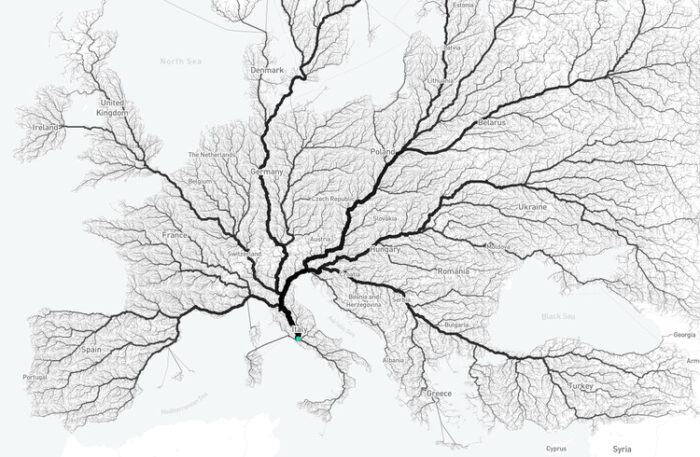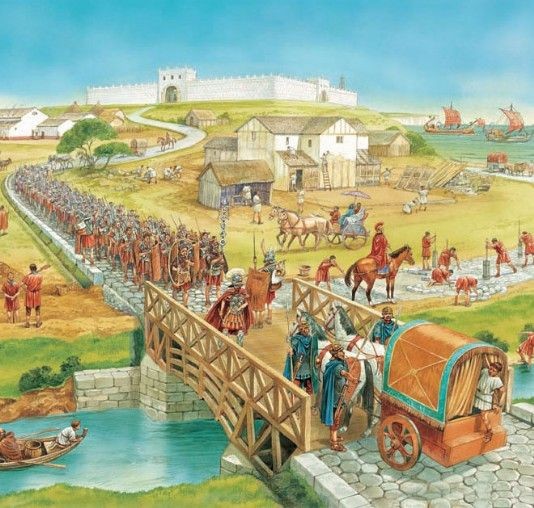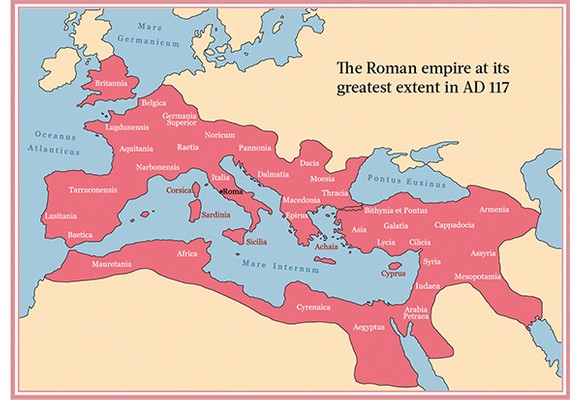Can you fathom navigating an environment without interstate highways and local roads to guide you across not only your town but all around the country? It would be nearly impossible, and we would definitely not be as interconnected with communities around us if it were not for Rome’s development of long-distance roads dating back to the third century B.C.. You have probably heard the phrase “all roads lead to Rome,” and although this is physically true, there is also a notable meaning behind it.

What makes Roman roads so great? When zooming out on all of the legacies left behind by varying empires, rulers, and civilizations, it is apparent that Roman roads hold significant value in determining the progress of society. Other large empires have left us with important legacies, like Babylonia for example. However, these legacies that have been preserved were mostly abstract, such as codes of law, philosophy, mathematical understandings, and religion. These concepts have influenced how we function and navigate within a society, but without the creation of the physical infrastructures of Rome, there would be no interdependence of nations through trade, or the strengthening of order, culture, and identity.

What do I mean when I say the development of culture and identity, you may ask? By being able to travel from one municipality to another, cultures and races were able to interact, intertwine, expand, and diversify within their boundaries. The term “cultural identity” can be defined as centering individuals in relation to geographical and physical surroundings. Thus, cultural identity was enhanced through the construction of Roman roads and the mobility that stemmed from this infrastructural development.
Despite the earliest construction of roads dating back to 4000 BCE, during the period of the Roman Empire, Roman engineers took it to another level of craftsmanship. The construction of Roman roads began as a stamp of authority as the Roman military set off to conquer neighboring civilizations. However, with public and private funding, additional roads expanded and became more popular for use by the public. These roads were hand-crafted based on the surrounding geography and had remarkable detail and precision. The Roman engineers were even able to impose drainage techniques so that the roads would stay usable and not flood. Take a look at this magnificent artistry:

Furthermore, a study done in 2018 demonstrated that there is a direct correlation between the quantity of Roman roads in a region and the quantity of modern roads. Additionally, the study determined that with a higher quantity of roads, greater economic activity currently exists. Although we don’t always realize it, the Roman Empire left a massive legacy on modern-day civilization. Specifically, transportation systems influenced by the Romans have had the greatest impact on the growth of the developed world. I mean think about it: if every civilization remained isolated as they were in the B.C. era, we would not be nearly as advanced of a society as we are today. From the influence of Roman roads, trade has been able to prevail and upgrade in magnitude, and knowledge has expanded to great lengths.

Hi! My name is Kate Rubich and I am a sophomore majoring in Environmental Economics. After our class discussion on Roman Roads a few weeks back, I was intrigued about the legacy and impact left by this new infrastructural development. I hope you enjoy!
